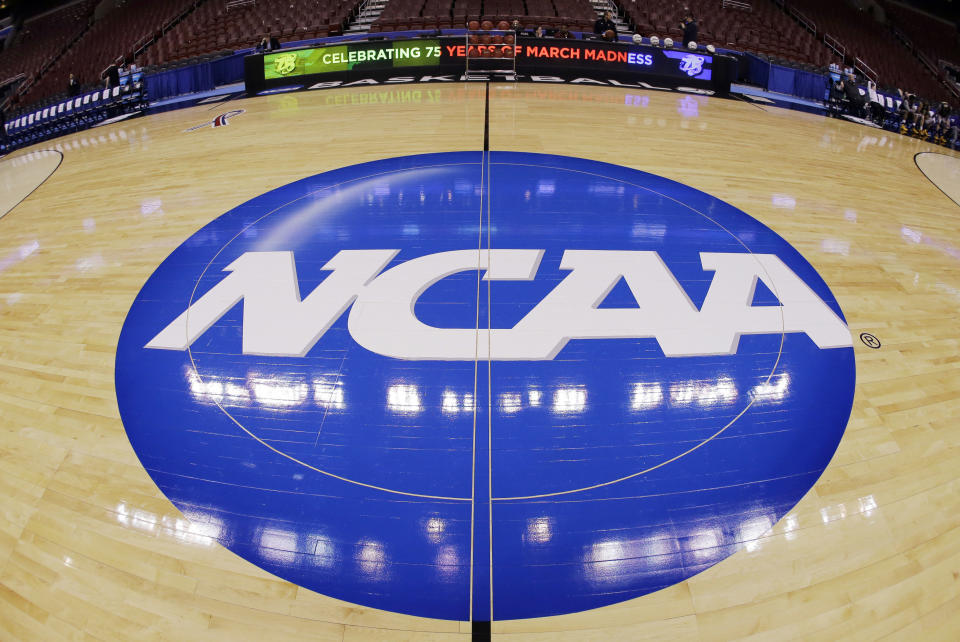Why NCAA must back revolutionary athlete transfer proposal
The Big 12 is striving to become the liberator of college athletics.
CBSsports.com reported Tuesday that a Big 12 proposal to overhaul antiquated and unjust transfer rules is gaining traction. It should. It makes far too much sense, fixes too many problems and addresses too many pressing issues to be ignored. Now it just needs to be passed.
In the NCAA bylaw-making sausage factory, that’s always easier said than done. But a significant percentage of those associated with college sports now recognize the inequity of the transfer process as it currently exists. In an era of championing student-athlete welfare, a critical mass has been reached in this one area where athletes traditionally have been treated like chattel.
The proposal, authored by Baylor law professor Jeremy Counsellor and Iowa State molecular pharmacology professor Tim Day — the NCAA faculty athletics representatives for their schools — calls for two key changes that tilt the balance of power back to the athlete.
The first calls for a complete abolition of transfer limitations. Quite simply, schools would no longer be allowed to tell a transferring athlete where he or she couldn’t go, including arch rivals and conference opponents. That’s long been an indefensible position, but it has persisted.
As recently as December, Mississippi was placing transfer limitations on players after receiving a 2018 postseason ban from the NCAA. Only when the issue became public did the school back down and eliminate the restrictions — which is the way these things tend to go. Schools have needed to be shamed into doing the right thing with transfers.
(The Big 12 proposal would allow immediately eligibility for any player whose sport is hit with a postseason ban, regardless of year in school. That would eliminate the need for what has been happening with Ole Miss transfers — attorney Thomas Mars has been leading an offensive on their behalf, urging NCAA rulings granting them eligible for the 2018 season.)

The second calls for transferring athletes to be immediately eligible to play in the event of their coach leaving the school, whether resigning to take another job or being fired. This would deconstruct the stubbornly held NCAA position that athletes make their college choices not because of the coach, but because of the school itself. The one caveat here is that athletes would not be able to follow coaches leaving for another school and have immediate eligibility, a sensible qualifier that would curtail wholesale raiding.
There is zero doubt that coaches sell themselves, their coaching, their mentorship and their ability to produce professional players to recruits. They will also sell the university itself — facilities, campus life, even academics every once in a while — but often as a secondary attraction. When a coach abruptly leaves a bunch of players he made promises to, they shouldn’t be left in a one-year limbo.
Those are the biggest takeaways from the Big 12 proposal, which can be viewed in its entirety here. But what it doesn’t endorse also makes sense.
It stops short of encouraging the complete chaos that would accompany unrestricted transfers across the board. That model, which would grant players immediate eligibility to compete without sitting out a season, has gained some support recently. Proponents of it liken the freedom of movement to that of coaches, who never have to sit out when moving from school to school.
That model would be a complete disaster. Transfers within football and especially men’s college basketball — where many players come to college as AAU and high school migrant workers — already are rampant. Granting what would basically be annual free agency would create far more problems than it solves.
For one thing, it would further destabilize academics, making pursuit of a degree all the more difficult within sports where Academic Progress Rate and Graduation Rate already are lowest. For the vast majority of football and basketball players who won’t make a dime professionally — and the many more who will make some money but hardly earn a life’s savings — wandering from program to program chasing playing time at the expense of a diploma would be the worst possible outcome.
And if schools think tampering of their players by other schools is rampant now, guess how bad it would be if there were no year-in-residence requirement for a regular transfer? It would be anarchy, an extension of the pre-college recruiting that has been excessive for years.
Young men ages 18-22 are famously at risk for impulsive decision making. And a lot of them are advised by opportunists who view college athletes as commodities-in-waiting. Decisions about changing schools should be anything but impulsive, and if transfers were immediately eligible, the response to a benching, a butt-chewing or a position change would be a surge of abrupt departures.
As out of vogue as it may be, there is something to be said for delayed gratification. Working through adversity and committing to the hard way over the grass-is-always-greener escape method has produced a whole lot of success stories in college athletics.
But unfair restriction of movement is something else altogether, which is where the Big 12 proposal for change in the current structure is most compelling. Ending the indefensible practice of limiting transfer options and extending immediate eligibility after a coaching change are great ways to change the historic imbalance of power between institution and athlete.
Let’s hope the NCAA membership recognizes the value of this proposal, backs it and then fast-tracks it into existence.
More from Yahoo Sports:
• Caught: Culprit who yelled during Tiger’s backswing
• Super Bowl or not, Eagles won’t have a QB controversy
• As Indians dump Wahoo, this should be new logo
• Eric Adelson: Korea tensions have serious meaning for one Patriot

